Over the next few months the most talked about event dominating the Indian investors mind would be the 2014 General Elections. One just needs to look at the relative performance of the Sensex 30 compared to its peers Bovespa (Brazil Index) and Shanghai Composite Index (China Index) to gauge the strength displayed by the Indian indices. While most Emerging market indices have been weak over last 6 months, Sensex has been stable without any clearly visible decisive trend. We believe that the major reason for this is because most market participants are keeping their fingers crossed with respect to the outcome of General Election.
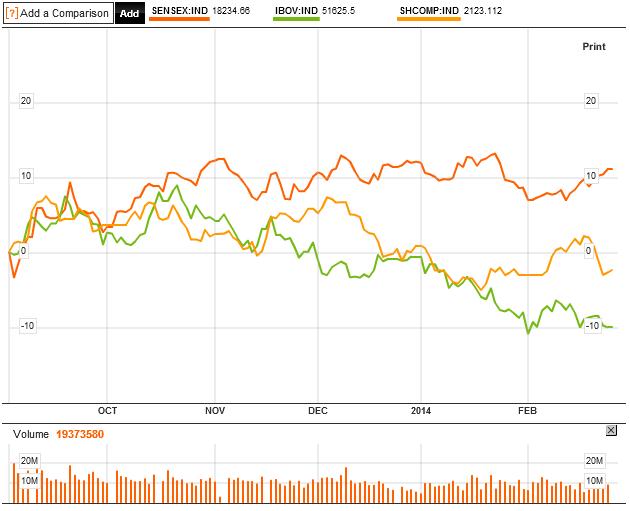
In continuation of our effort to fill the gap in the analysis presented to the investors as a result of political impact, this week to look at one more scenarios that has an equally strong probability, but is underappreciated by the markets as of today. Before we jump in to that lets recap in brief what we said last week.
What did we delve in to as a thought exercise last week?
Last time we tried to look at one possible scenario. We tried to see what would be the likely impact on the Indian economy and hence the stock market if we were to see the emergence of a strong Centre Right BJP led government at the centre by asking “What if a Centre-Right-BJP led coalition was to win this general election?”
Much of what we discussed was also highlighted by Narendra Modi in a speech given by him on 27 Feb, 2014 in Delhi at an International Conference on Indian Economy which was attended by prominent Businessmen and Top Investment Bankers. His speech largely confirms our view that a strong BJP led NDA government would keenly focus on:
- Policy execution rather than legislations to solve the major problems afflicting the Indian economy.
- Reforms in PSU sector especially Banking Sector.
- Major power sector reforms that lead to 24×7 power supply.
- Skill development and building up Indian demographic dividend.
- Getting the economy back on track by bringing the governance back or (“more governance less government” as Modi puts it.)
Political Analysis for an alternative outcome:
This time we would like to explore an alternative view: “What if the BJP forms a weak centre right coalition at the Centre?” Before jumping towards our thought exercise let’s look at some of the core premises behind it:
- One thing that all political commentators agree on is that, there is a strong anti-incumbency force against Congress and as a result a strong possibility exists, that Congress might see one of its weakest performances post-independence.
- An anti-accumbency wave against Congress does not necessarily leads to Pro-BJP wave as a natural choice for the country.
- BJP has a strong organizational presence in North and Western India but is either absent or is weak in Eastern and Southern India. (However opinion polls do show that we may see first big breakthrough for BJP in some of the Eastern and Southern states).
- It’s generally believed among the analysts that Congress has traditionally enjoyed a strong presence in rural India while BJP has generally enjoyed a significant presence in Urban India. (This is an interesting bias most analysts have, as one of the major reasons Congress tally reached 206 in 2009 was because of its strong performance in Urban India rather than rural India.)
- Other than BJP and Congress, no other single political force exists as of today, across which a political combination can form a government.
- However Non-BJP and Non-Congress parties can definitely play spoil sport for any of the two pivots around which most stable political formations have gravitated.
- These ‘Other’ parties have tended to control more than 200 seats over last three general elections. (it stands at 221 seats and includes all parties including those who have traditionally aligned with Congress, traditionally aligned with BJP and those who are independent/opportunist).
Based on our premises we can deduce that for BJP to form a strong Centre right formation it would on its own need to get anywhere close to 200-220 seats with its traditional allies bringing in another 25-30 seats, Congress tally has to drop to below 100 suggesting that others would still control anywhere close to 200 seats. This would allow BJP to form a strong centre right Government by forming post poll alliance with one or the other regional parties (TDP/YSRC, AIADMK, TMC, AGP, BJD).
BJP Still faces strong challenges:
We believe that while one can agree on anti-incumbency against Congress and a strong performance by BJP in the general elections, it is too early to say that we will see BJP forming a strong Centre right government at the centre. Rather if one looks at history one can glean at, at least two negative points in our analysis that can scuttle BJP’s performance:
- BJP’s performance in general election has generally been over estimated by the opinion polls. This is largely because of the fact that historically BJP has a strong urban presence but a weak rural presence in most of the states.
- Elections are lost or won at booth levels; here the performance depends a lot on the local factors like organizational strength, selection of local candidates.
It is in this context one needs to see BJP’s alliance with LJP. While one may argue that alliance with Ram Vilas Paswan led LJP signals an end to communalism-secularism debate given the fact that Ram Vilas Paswan was the first Union Minister to walk out of NDA alliance in April 2002 because of 2002 Gujarat Riots. So, Ram Vias Paswan coming back to NDA fold has a more symbolic value in attracting allies and weakening opposition argument.
But all these come at a cost. One, these symbolic alliances will come at the cost of BJP tally in the region without necessarily adding much at the National Level. Second it would seriously jeopardise party worker morale in the region that was running high on the backdrop of strong pro Modi wave in the region. Third, some of the ticket hopefuls in BJP from constituencies that would now go to LJP may themselves fight the elections as BJP rebel candidates cutting the BJP-LJP votes and benefitting Congress-RJD alliance or JD (U). We believe this is the first big mistake by the BJP led NDA, as other than adding a symbolic value LJP brings in little else on the table.
Congress can still give a strong fight:
In spite of general negative perception against Congress across India, merger in between TRS and Congress would certainly boost Congress performance in Telangana. Second, Congress continues to remain well entrenched in rural India, while that logic may be severely tested in some parts of India, it continues to have its say. Third, one need not go beyond Gujarat itself, where in spite of strong performance by BJP in state elections, Congress’s performance in the Lok Sabha election has relatively been better (as in while Congress still finishes second, the ratio of split in seat share is much better for Congress in General election than in State election).
Strong regional parties performance expected:
While regional parties like NCP in Maharashtra, JD(s) in Karnataka, JD (U) in Bihar, SP in Uttar Pradesh, DMK in Tamil Nadu are expected to perform poorly. Other regional parties may actually do well. BSP continues to pose a formidable challenge to BJP in UP, AIADMK is likely to garner most of the seats in Tamil Nadu, BJD is likely to do well in Orissa and TMC led by Mamta Banerjee is likely to do very well in West Bengal. All of these can dent BJP’s finally tally.
How will Indian Economy and Stock Market get impacted because of weak BJP performance?
A weak showing by BJP where in it could muster only close to 180-190 seats would have two immediate fallouts:
- A weak BJP would mean that it is not necessary that Narendra Modi would be an automatic choice of NDA as a Prime Minister. Many post-poll alliance partners would want a more moderate face. (this is going to be interesting and one has to watch if this plays out as even a number close to 180 would elevate Modi to Vajpayee stature among the party workers and RSS).
- A weak BJP means radical economic policies like disinvestment of PSU companies, controlling fiscal deficit through reduction in government spending on entitlements, policy of investment led growth especially for manufacturing and infrastructure sectors, reforms in energy and natural resource sectors including Power sector may take a back seat as a result of little political will in the government to pursue them.
The twin effect of these possibilities may mean that just like UPA government an NDA government might not be very different in its economic agenda and its policies. The only difference may be that while UPA pursued policies with a slight shade of left (social welfare, rights based legislations), NDA may pursue policies with a slight shade of right (autonomy to PSU but no disinvestment, skill development with employment guarantee). But with weak political support base it would not be a surprise to see that a NDA government is likely to be as indecisive as a UPA government.
This would be a pity for the economy as a whole, as it would continue to mean that while we may see selective opportunities in some sectors, but most of the key economic reforms may take a back seat. Even in areas where we do see any economic reforms we should not be surprised to see largely half-baked attempt at economic reforms. While it’s difficult to gauge the specifics as of now, as a lot will depend on post poll alliance combination, we still can hazard some guess:
- PSU Banks may see USA like Bad Bank been formed that may absorb stress assets from the PSU Banks, helping them clean their balance sheets. As the tabs would be picked up by tax payers, this would be very good news for shareholders but bad news for tax payers. However this will still not address the core reasons for the balance sheet of banks becoming stressed in the first place. (An alternative route could be boosting bank equity by the government like last time, however it would result in outcome that is bad for tax payers and bad for stock holders.)
- PSU disinvestment through small stake sale would continue. UPA perfected the art of selling small stakes in PSU companies each year than outright strategic sale of stake in them. We think this may continue. We see this more like selling family silverware to support current year consumption but does not necessarily create some long term capital assets. We think that reforms of the kind of HZL, BALCO where strategic investor is bought in, who has experience in managing these assets better or giving autonomy to the professional managements in taking decisions with regular CAG audit are much better solutions e.g. Deutsche Post which manages DHL where German government continues to hold 24.8% equity stake.
- Power Sector reforms: Just like banks we believe that the government may seek to go after helping State Electricity Boards in restructuring their balance sheets. While that is a necessary condition it would still not address the problems of power sector regulatory reforms and hence would be just a band-aid solution at best.
- Infrastructure reform: While we do think that we may see more road sector projects granted by NHAI however the problem over here has not been just a problem of NHAI not coming out with road projects, but also problems in land acquisition. A weak government at the centre may not be able to solve this.
- Manufacturing sector reform: While we do believe that it is very likely that NDA government would keenly focus on cutting down bureaucracy however it would not have the political strength to pass key legislations in Environment, Labour and making needed amendments in Land Reform Act such that India can attract capital easily. (We expect tax sops to boost investment rather than reforms to make India a business friendly destination.)
- Reforms in Oil marketing and energy markets: We do believe that UPA decision of small monthly increases to decrease under recoveries may continue. However we do expect weak oil prices in 2016-17 largely driven by increased US production, that may give a small 2-3 year window to free OMC’s from government control under an independent regulatory authority if not outright disinvestment.
Conclusion:
Economic Outcome:
These half-baked reforms may create some investment opportunities in specific sectors depending on policy direction that the government takes. However one must not out rightly assume that even a weak BJP led government would be very market friendly. And this also leads to the outcome that a weak BJP government need not necessarily usher in a policy reset, second generation economic reforms, micro level reforms (i.e. reforms at each sector or industry level as former RBI Governor I.G. Patel had argued for).
Market Outcome:
If this scenario does play out, it will keep the Bulls and Bears both at bay, the choice for a value investor would be to focus on specific companies with bottom up analysis that would indicate selective opportunities. Expectations of broad market revival may turn out to be a bit of wishful thinking on our part. Investors should then focus only on companies available at great valuations with strong moat eg. FMCG companies with strong Brands, Cyclical companies with strong competitive cost advantages. But any expectation of a 2005-2008 bull run must be put to rest and perhaps luck.
Political Outcome:
And herein we put out a radical view, we think that in such an eventuality BJP would not be too worried if its experiment in Government formation fails (over 2 years or so) as long as it can pin the failure to the small number it got and go to the electorate seeking a strong decisive mandate for itself. Unlike Congress it would continue to have a strong political leadership in centre and state and a story of a deserving leader wronged. This view is also based on the fact that over last 4 general elections we are seeing the vote share of ‘Other’ is now in the down swing. Is this signalling a return to bipolarity at least at the centre over the next decade?

Next week, we will seek to answer; what if all opinion polls are underestimating Congress’ performance and the impact that a Congress led government will have on economy and the markets, the opportunities it would create for investors, the care an investor needs to take, the portfolio strategy an investor needs to follow.
Disclaimer: This publication has been prepared solely for information purpose and does not constitute a solicitation to any person to buy or sell a security. It does not constitute a personal recommendation or take into account the particular investment objectives, financial situations or needs of an individual client or a corporate/s or any entity/ies. The person should use his/her own judgment while taking investment decisions.
If you liked what you read and would like to put it in to practice Register at MoneyWorks4me.com. You will get amazing FREE features that will enable you to invest in Stocks and Mutual Funds the right way.
Need help on Investing? And more….Puchho Befikar
Kyunki yeh paise ka mamala hai
Start Chat | Request a Callback | Call 020 6725 8333 | WhatsApp 8055769463




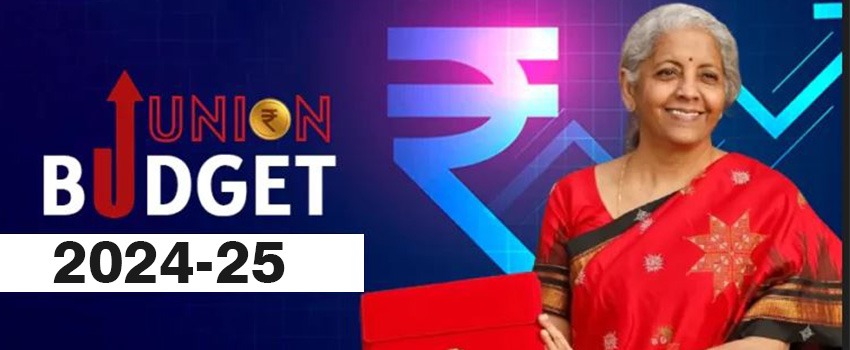
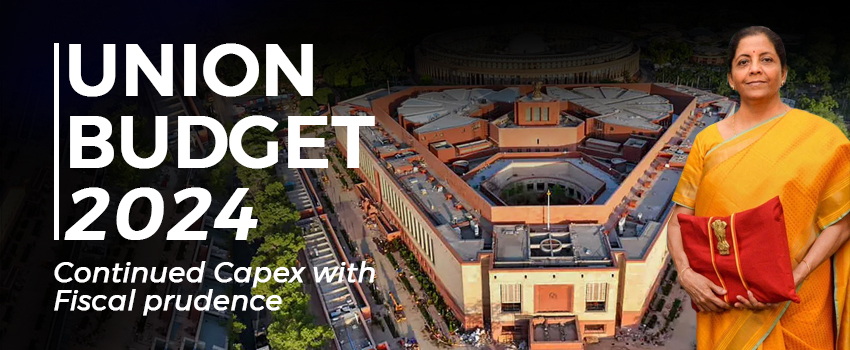

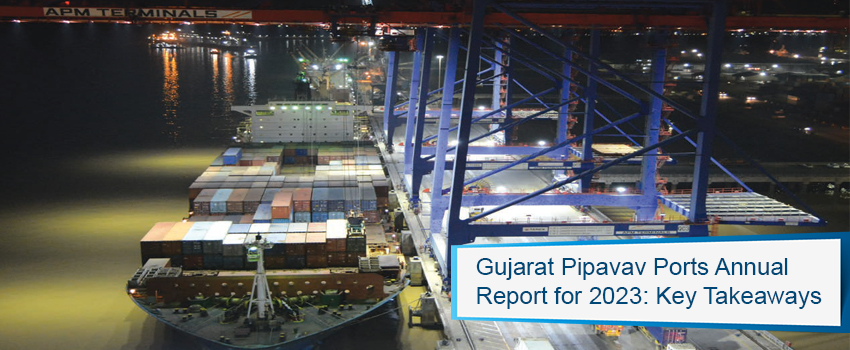

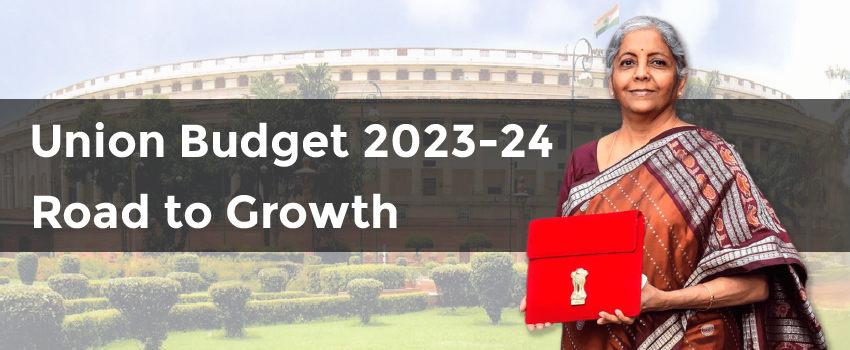
3 comments